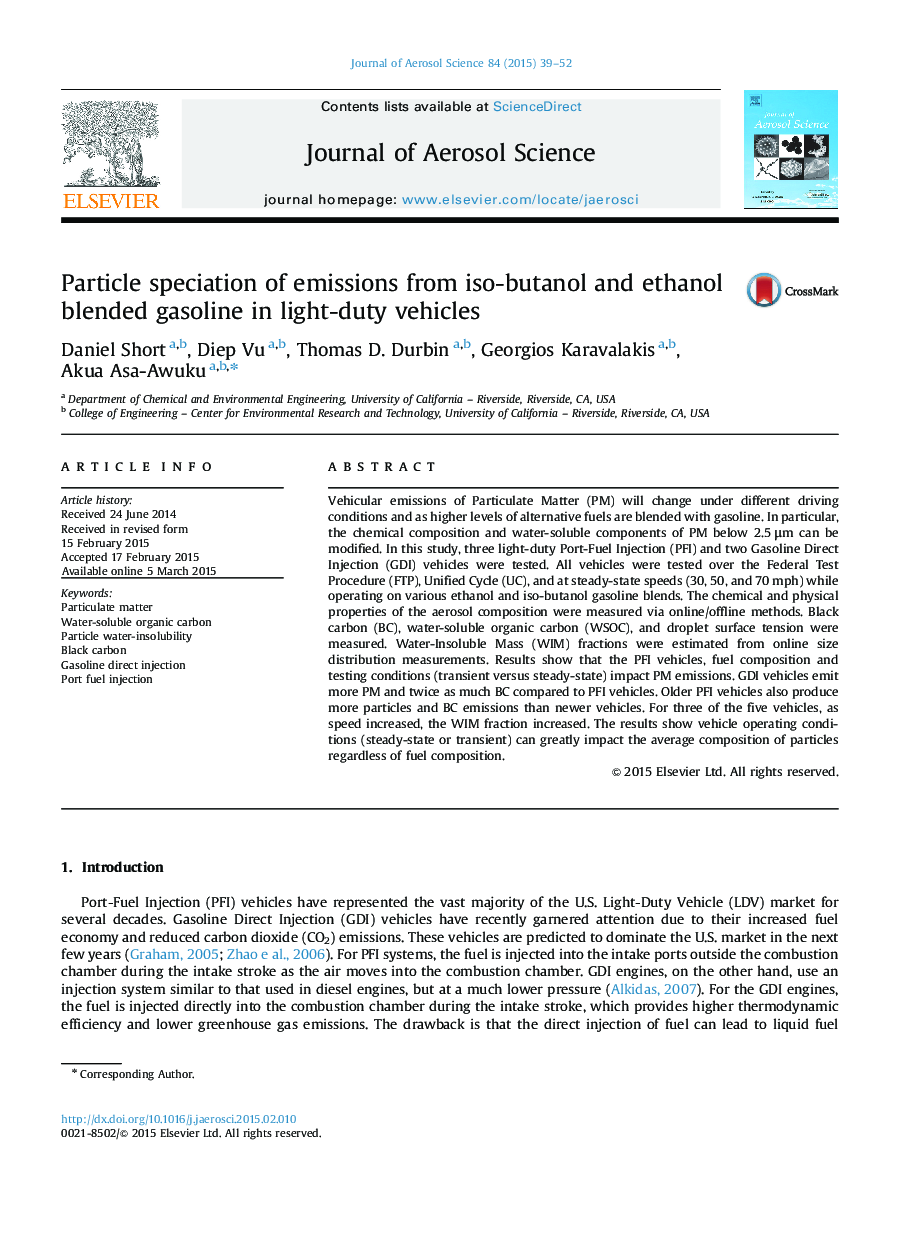| کد مقاله | کد نشریه | سال انتشار | مقاله انگلیسی | نسخه تمام متن |
|---|---|---|---|---|
| 4452255 | 1620739 | 2015 | 14 صفحه PDF | دانلود رایگان |
• High steady-state speeds produce large fractions of sub-40 nm hygroscopic particles for both PFI and GDI vehicles.
• Shown for both the higher steady-state speeds and for the higher speed and more aggressive phase 2 of the UC.
• Roughly 30% of the PM mass consists of WSOM for the GDI vehicles.
• Total PM mass was 5 times the amount of BC measured for the PFI 3 and both GDI vehicles tested.
• No significant trends were shown between the BC EFs and varying low-level ethanol and iso-butanol concentrations.
Vehicular emissions of Particulate Matter (PM) will change under different driving conditions and as higher levels of alternative fuels are blended with gasoline. In particular, the chemical composition and water-soluble components of PM below 2.5 μm can be modified. In this study, three light-duty Port-Fuel Injection (PFI) and two Gasoline Direct Injection (GDI) vehicles were tested. All vehicles were tested over the Federal Test Procedure (FTP), Unified Cycle (UC), and at steady-state speeds (30, 50, and 70 mph) while operating on various ethanol and iso-butanol gasoline blends. The chemical and physical properties of the aerosol composition were measured via online/offline methods. Black carbon (BC), water-soluble organic carbon (WSOC), and droplet surface tension were measured. Water-Insoluble Mass (WIM) fractions were estimated from online size distribution measurements. Results show that the PFI vehicles, fuel composition and testing conditions (transient versus steady-state) impact PM emissions. GDI vehicles emit more PM and twice as much BC compared to PFI vehicles. Older PFI vehicles also produce more particles and BC emissions than newer vehicles. For three of the five vehicles, as speed increased, the WIM fraction increased. The results show vehicle operating conditions (steady-state or transient) can greatly impact the average composition of particles regardless of fuel composition.
Journal: Journal of Aerosol Science - Volume 84, June 2015, Pages 39–52
